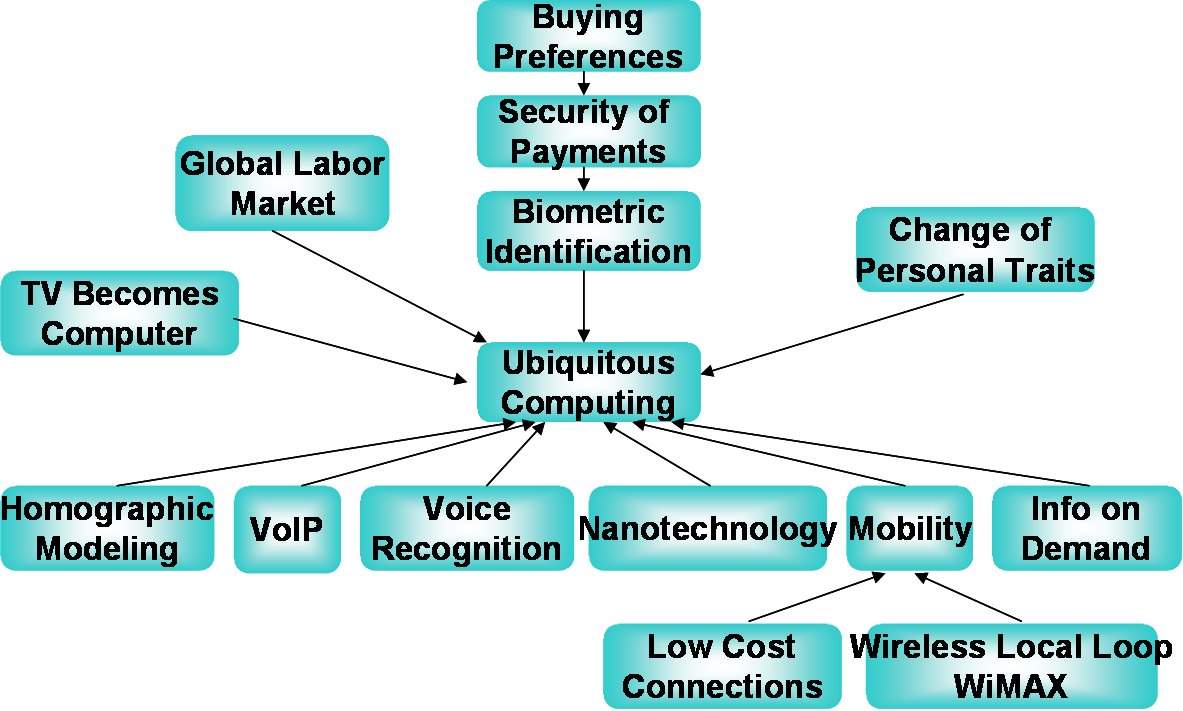Ubiquitous Computing
The Internet will change towards ubiquitous computing and existential media will be absorbed into the space of the user. The Internet will not be a separate space but an integral part of our lives and to which we are always connected and interacting. Wireless connections will dominate (WiMAX will replace WiFi). Thanks to nanotechnology, computers under 1 cubic centimeter will be embedded in wristwatches and jewelry, and even woven into clothing. You will no longer need to sit down at a computer. Real “techies” will even have computers embedded under their skin. People will “see” the Internet via holograms or eyewear using homographic modeling. Websites will be real spaces with people with whom you converse and interact. Online shopping will be very much like going to a bricks-and-mortar supermarket as you take items off shelves, put them in your shopping cart, and check out with a clerk. Everything will be voice activated, including computer commands.
You will no longer need a myriad of usernames and passwords but instead use biometric identification (such as using a combination of face, voice, iris, and fingerprint recognition). This means more transactional websites with higher user confidence in the security of their transactions. Work spaces, education, and research will be completely virtual. Television, radio, CDs, DVDs, and movie theatres will no longer exist. They will all be available online with a single voice command. In fact, you will be able to gather in a virtual space with your friends to watch and discuss a movie. And, everything inanimate (such as smart appliances) will have wireless connections. Your home will have its own wireless local area network (WLAN) so it can “talk” to you and all the other devices in your house. The Internet will become more user friendly with seamless, natural user interaction.
-- Kelly
